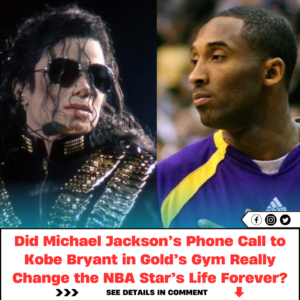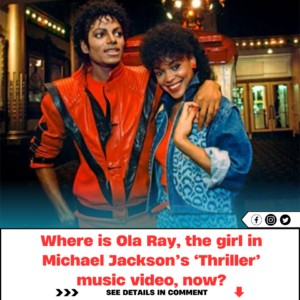Start with two eight counts of slow, punch-drunk stomps, paired with sharp head twitches to the right. Next the arms come up; first straight, then a bit jazzy. There’s a series of tight pelvic thrusts before you clap your hands overhead, isolating your head movements as you drag one leg up to meet the other. After a brief shimmy, raise your hands again, now held like claws, from side to side — the move that everyone recognizes as “Thriller.”
December 2 marks 40 years since Michael Jackson released the groundbreaking music video, turning choreographer Michael Peters’ spooky, funky dance sequence into a worldwide sensation. The video, directed by John Landis, is more like a short horror flick: It begins with a 24-year-old Jackson transforming into a werecat and stalking his date, played by Ola Ray, through an eerie, foggy forest, only for a plot twist to reveal it’s a meta, movie-within-the-music-video scene — Jackson and Ray are watching their alter egos during a date night at the theater. As they walk home, though, they encounter a horde of the undead, and Jackson himself turns into a zombie just as the iconic performance begins.
These synchronized dance moves are the climax of the 12-minute scripted narrative. (The music video concludes with Ray woken by Jackson from a nap, as if it were all a dream — though Jackson has the glowing eyes of a werecat once again.)
While there are plenty of visual elements from the music video that have become iconic — particularly Jackson’s red moto suit — the dance sequence has become one of its most imitated aspects, with tight choreography that lends itself to viral social media performances today. Some of the top videos on TikTok include creator Dimitri Beauchamp performing the routine at home in Long Island to ring in fall, and Los Angeles dancer Enola Bedard staging a small boardwalk production for Halloween wearing a jacket like Jackson’s. Flash mobs and other events — such as New York’s annual Greenwich Village Halloween Parade — regularly perform the number.
Two months after Jackson died at age 50 in 2009, 13,597 people performed the dance in Mexico City, setting a Guinness World Record for the largest group to successfully take on the choreography.

Memorable moves
Michael Jackson and his zombie dance crew in “Thriller,” 1983 Allstar Picture Library/Alamy Stock Photo
Vincent Paterson, the video’s assistant choreographer, who went on to work with Jackson for over 15 years, credits the stylish ease of Peters’ most famous moves with why the dance has been copied for decades.
“People don’t have to look like trained dancers to have fun with the movement,” he said in a phone call.
“If we see somebody put their two hands like claws up from one side to the other, we immediately go, ‘Oh, Thriller!’” he said. “I think that made for such a memorable, memorable piece of choreography.”
Paterson’s role was to train Jackson and the dancers for four days in the studio before they filmed — but he also played one of the undead, wearing a shredded suit and tie in the music video.
“I thought (Peters) hit the target immediately,” Paterson recalled of seeing the sequence for the first time. “It was technical to a point. You couldn’t be too technical with Michael Jackson. He wasn’t an extremely trained dancer, but he could pick up things very, very well. But it had a great deal of technique. I thought that the intricacy of the rhythms was so fantastic.”

Industry changes
A trailblazer of ’80s music video choreography, Michael Peters (pictured left) also won a Tony award for his work on “Dreamgirls” in 1983 AP
The third music video released alongside Jackson’s album of the same name, after “Billie Jean” and “Beat It,” “Thriller” debuted in the early days of MTV. It was the album’s final single, but it doubled the already sensational number of album sales, from 16 to 32 million by the end of 1983, thanks in large part to the hype generated by the music video. It premiered in movie theaters ahead of screenings of Disney’s “Fantasia,” became a record-selling VHS tape and is widely recognized as the greatest and most famous music video of all time, including by MTV, VH1, TIME and the Library of Congress.
“Thriller” proved to music industry leaders that the music video format wasn’t just “a gimmick,” according to Brad Osborn, an associate professor of music theory at the University of Kansas, and author of “Interpreting Music Video: Popular Music in the Post-MTV Era.” Instead, it was “a successful strategy for promoting album sales.” It was also important, Osborn added, because it “showed White record executives and people at MTV that there was viability in promoting music videos by Black artists.”
Stylistically, the video was risky too, Osborn pointed out. The album version of the song was only 6 minutes long, less than half of the video length.
One of the reasons the song was expanded was to “add extra time on that disco beat for the dance sequence to unfold — it’s looped over and over again,” Osborn said. The video version also forgoes the standard verse-chorus format, and the song’s structure, building up to a single chorus at the end after a minute and a half of wordless dancing.

“When Michael Jackson, after a minute and a half, looks at the camera and brings the chorus back — Thriller! — that is the one and only chorus we get in the video. It is nine minutes and 41 seconds into the song,” Osborn said. “It makes for this hugely climactic moment.”
But there’s a reason music videos rarely stray from the album formula, Osborn said — which is to engage you with a catchy chorus within the first minute or two. Thriller’s approach was, in theory, “actually a really terrible strategy,” he explained with a laugh. “(Producers) want you to hit the hook straight away. Waiting nine minutes until your chorus hook is just a terrible move — it is really remarkable that it works, to be honest.”

Lasting legacy
Nearly 14,000 people gathered to dance “Thriller” together in Mexico City in 2009, a Guinness World Record-setting performance Dario Lopez-Mills/AP
Peters rose to fame for his work with Jackson, Donna Summers, Lionel Richie and Pat Benatar — with Benatar’s commanding shimmying in “Love is a Battlefield” also debuting in 1983, for example — but he died in 1994, from AIDS, before he could see the full extent of the legacy of “Thriller.”
“Thriller,” as well as the earlier Jackson-Peters collaboration for “Beat It,” set the standard for so many highly choreographed pop music videos that have followed, as 1980s pop stars gave way to the boy bands and girl groups of the 1990s.
Artists like Jackson were “bringing so much dance to music videos at the time. I think it changed everything for choreography,” Paterson said, also citing the impact of Madonna’s performances. That decade “brought (young people) into dance studios because they wanted… a profession as a dancer, and they finally saw a way that it could happen.”
Today, Paterson still occasionally teaches “Thriller” moves. Five years ago, he performed with a large class at the Debbie Reynolds Dance Studios, where the original choreography was created, for the last time before the LA-based studio was demolished. (An offshoot of the studio has since opened in Burbank). Paterson filmed the segment for entertainment channel The Buzz.
“When we created ‘Thriller,’ we had an idea that it would be major,” he said in that video. ”I guess you could say viral before there was something called viral.”





